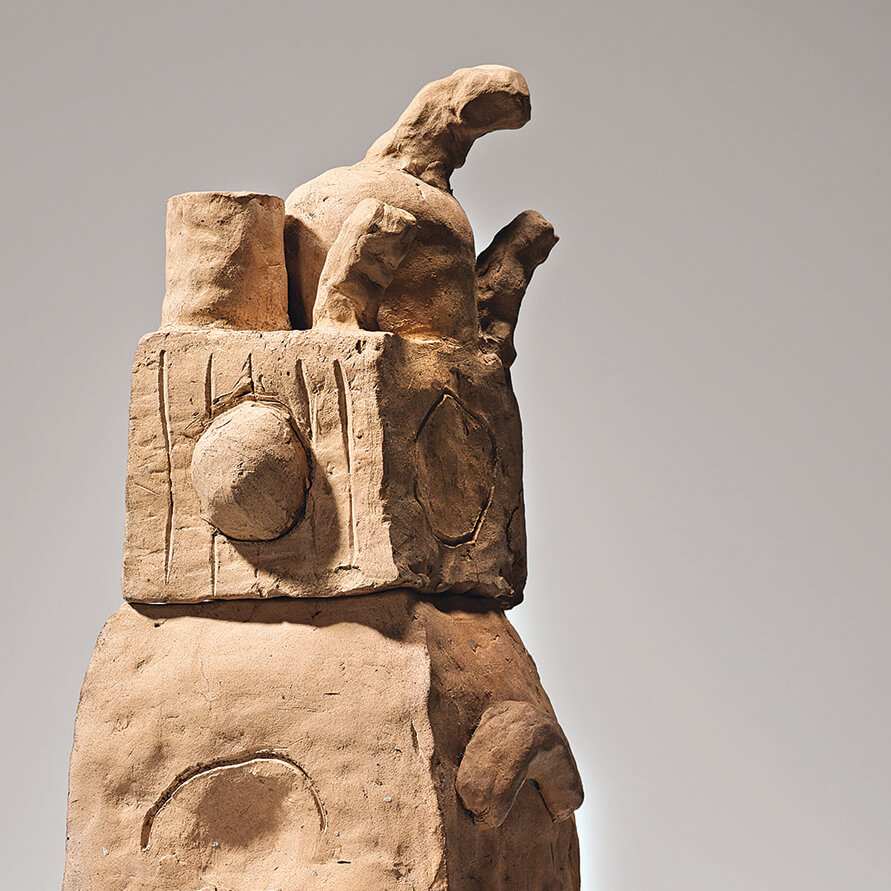Below, Eva Masterman reviews Jenni Sorkin’s latest work Live Form: Women, Ceramics, and Community. Flip through Ostracon Journal of Criticism and Issues #2 to see other Cfile recommended reading.

Live Form
Jenni Sorkin
Chicago: University of Chicago Press, 2016.
304 pages
Most of you will have heard of Black Mountain and the predominantly masculine mythology that surrounds it. It was a focal point for innovations in abstract expressionist pottery and avant-garde performance art, producing some of the most well known and influential artists of the 20th century – John Cage and Peter Volkous to name but two.
Fewer will know about the pioneering female potters who taught and worked both at Black Mountain, and at various other alternative learning sites, during the 1950s-60s. In her new book, Live Form: Women, Ceramics and Community (University of Chicago Press), international art critic Jenni Sorkin, uses a biographical approach to redefine the history of post war avant-garde performative practice, through a proto-feminist reading of three women who dedicated their lives to ceramics and alternative pedagogies.
The women in question are Marguerite Wildenhain, a Bauhaus-trained potter and writer; Mary Caroline (M. C.) Richards, who renounced formalism at Black Mountain College to pursue new performative methods; and Susan Peterson, best known for her live throwing demonstrations on public television. Against a backdrop of extreme misogyny, these women used that seemingly so innocuous of practices – functionalware – to displace male authority and to extend the reach of their own practice into the community.
Ceramics suffered from the post studio advancements in fine art sculpture during the 1960s, where the concept of ‘studio’ shifted from that of ‘physical place’ to ‘critical sphere.’ A practice inherently linked with object production, it has been pushed to the sidelines and largely written out of art history, struggling to retain relevance in a world where sculpture could be ‘anything.’ However, by focusing on the lives of three American potters, Sorkin suggests that, far from working in an isolated field, these three women directly influenced 1960s avant-garde and 1970s feminist collectivism. Not only this, but they also were experimenting with forms of social engagement and learning dissemination that were decades ahead of their time.
Live form itself was a term coined by Wildenhain in her book ‘Pottery: Form and Expression‘ (1959), to describe the intimate relationship between the body of a craftsperson and the wheel thrown vessel they create; size, girth, weight, shape are all determined through physical manipulation of the clay. For Wildenhain, the vessel is ‘live’ in that the clay registers the immediate gesture of the artist. Her term conveys the ‘artists embodiment of form itself through indexical presence that becomes ever present and unceasing’ (Sorkin, p11). Throwing is a unique process where the combination of the artist’s body produces an immediate form in real time, making the work live.
Sorkin proposes that the performative nature of throwing, as used by Wildenhain, Richards and Peterson, predicated the ‘artist-performer,’ and positions live form as an important tool that has implications beyond individual art production, stretching its influence to learning and the community. In doing so, Sorkin elevates ceramics out of the binary dialogue of ceramics-as-pottery and ceramics-as-sculpture. Through shining a light on the careers of these women, she proves that ceramics as a practice has so much more to give than pure object production – it also has far reaching implications within the fields of socio-political, community, personal enrichment and participatory practice.
Ceramics-as-sculpture is well documented through the histories of artists such as Ken Price and Peter Volkous, but ceramics-as-pottery has been frequently dismissed, especially in the wake of industrialization and the wider movements in art away from object and into site. What Sorkin draws on throughout the book is an ingenious reworking of ceramics-as-pottery as a uniquely positioned socially engaged art form.
In the fight to be recognized as ‘art’ ceramics has limited its critical reach to object-based production. This text is a refreshing look at an alternative reading of three highly innovative and talented women, that were unrecognized, silent influencers of a masculine dominated art world. Their practices become even more relevant and important as precursors to the influx of socially engaged work that is now populating the art world and museums of 2017. Perhaps it is a sign of how deeply these prejudices run that ceramics as a socio-economic discipline was being practiced and discussed in the 1950s and it has taken until now for someone to pull it to centre stage.
Ultimately these women failed to find the ‘right audience’, and their careers vanished in their lifetime as much as their male counterparts rose. At a time when fine art is seemingly so involved in re-exploring the practices of the 1960s abstract expressionists, this book comes as a much-needed counterbalance to that masculinity: Sorkin succeeds in positioning ceramics as not only part of that post-studio dialogue, but as a direct influencer of that movement. Live Form is a document of an important but forgotten history that has the potential to revitalize the discussions around contemporary and historical ceramic practice.

Author Jenni Sorkin, 2016, photo courtesy of Jenni Sorkin

Add your valued opinion to this post.